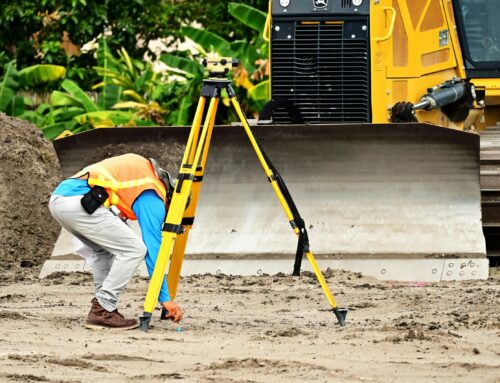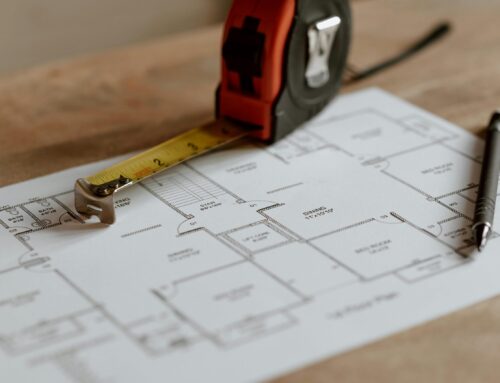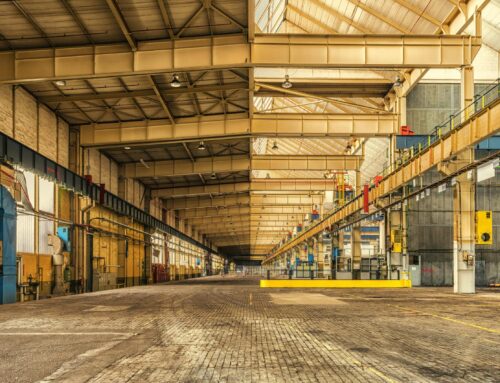This craft is not just about repairing old woodwork; it’s a meticulous art that breathes new life into historical structures, ensuring they continue to tell their stories for generations to come.
In this blog, we will explore the fascinating realm of joinery restorations Hampshire. From the quaint cottages dotting the countryside to the grandeur of historic estates, joinery restorations contribute significantly to maintaining the region’s architectural integrity. We’ll delve into the techniques, materials, and skilled craftsmanship that go into restoring and replicating intricate woodwork, all while adhering to the principles of conservation and heritage.
Join us as we journey through Hampshire’s towns and villages, uncovering the stories behind some of the most transformative joinery restoration projects. Whether you’re a homeowner with a passion for heritage, a professional in the field of restoration, or simply someone who appreciates the beauty of skilled woodwork, this exploration into joinery restorations will offer insights into a craft that is as much about preservation as it is about artistry.
- The Essence of Joinery Restoration
- Joinery Restorations Hampshire: A Market Overview
- Techniques and Materials in Joinery Restoration
- Challenges and Solutions in Joinery Restoration
The Essence of Joinery Restoration
Joinery restoration in Hampshire is more than just a construction task; it’s a preservation of history and craftsmanship. This process involves the careful repair and revitalisation of woodwork in historic buildings, ensuring that the original character and integrity are maintained while extending the life of the woodwork.
Understanding Joinery Restoration Hampshire
- Respecting Heritage: The primary goal of joinery restoration is to respect and preserve the historical significance of a structure. This involves meticulous attention to detail and a deep understanding of traditional techniques and styles.
- Assessment and Analysis: The process begins with a thorough assessment of the existing joinery. Experts analyse the extent of damage, the causes of deterioration, and the historical context of the woodwork.
- Craftsmanship and Techniques: Joinery restoration requires a high level of craftsmanship. Restorers use a blend of traditional hand skills and modern techniques to achieve results that are faithful to the original design.
The Role of Joinery in Architecture
- Aesthetic and Functional Elements: Joinery is a critical component in both the aesthetic appeal and functional aspects of a building. It includes elements like windows, doors, staircases, and mouldings, each contributing to the building’s overall character.
- Structural Integrity: Beyond aesthetics, joinery plays a role in the structural integrity of historic buildings. Proper restoration ensures that these elements continue to perform their structural functions effectively.
Challenges in Restoration
- Matching Historical Accuracy: One of the biggest challenges in joinery restoration is matching the original work in terms of style, materials, and techniques. This often requires extensive research and skilled craftsmanship.
- Dealing with Deterioration: Addressing the deterioration caused by age, weather, and other factors while preserving as much of the original material as possible is a delicate balance.
Joinery restoration Hampshire is a testament to the region’s commitment to preserving its rich architectural heritage. It’s a delicate dance between honouring the past and using present-day skills to ensure these historical treasures can be enjoyed by future generations.
Joinery Restorations Hampshire: A Market Overview
In Hampshire, a county steeped in history and architectural diversity, the market for joinery restorations is both vibrant and essential. Understanding this market requires a look at its demand, the range of services offered, and the unique challenges and opportunities it presents.
Demand and Scope
- Historical Significance: Hampshire’s wealth of historic buildings, from Tudor houses to Victorian villas, drives a significant demand for skilled joinery restorations. These structures often feature intricate woodwork that requires expert attention to maintain.
- Diverse Clientele: The market caters to a wide range of clients, including heritage organisations, private homeowners, and commercial entities, all seeking to preserve the character and integrity of their properties.
Services Offered
- Comprehensive Restoration: Services typically include the restoration of windows, doors, staircases, and ornamental woodwork, each requiring a tailored approach depending on the period and style of the building.
- Custom Replication: In cases where original pieces are beyond repair, joiners offer custom replication services, creating new pieces that match the historical originals in design and material.
Market Characteristics
- Skilled Craftsmanship: The market is characterised by a high level of craftsmanship, with artisans possessing deep knowledge of historical styles and techniques.
- Technological Integration: While traditional skills are paramount, there’s also an increasing use of technology for precision and efficiency, such as CNC machining for intricate designs.
Challenges and Opportunities
- Maintaining Authenticity: A key challenge is ensuring authenticity in restorations, balancing historical accuracy with modern building regulations and materials.
- Sustainability: There’s a growing focus on sustainable practices, from using locally sourced timber to employing eco-friendly techniques, aligning with broader environmental concerns.
- Educational and Training Opportunities: The market offers opportunities for apprenticeships and training, ensuring the transfer of traditional skills to new generations.
In summary, joinery restorations Hampshire represent a crucial and flourishing sector, driven by the region’s rich heritage and a commitment to preserving its historical legacy.
Techniques and Materials in Joinery Restoration
Joinery restorations in Hampshire, a task that delicately intertwines the old with the new, relies heavily on the choice of techniques and materials. These elements are crucial in ensuring that the restored joinery not only matches the original in appearance but also offers longevity and functionality.
Traditional Techniques Preserved
- Hand Tools and Craftsmanship: Many joinery restorers in Hampshire still use traditional hand tools. These tools, operated by skilled craftsmen, allow for a level of detail and authenticity that modern machines can’t always replicate.
- Time-Honoured Methods: Techniques such as mortise and tenon joints, dovetailing, and hand carving are often employed. These methods have stood the test of time and are essential for maintaining the historical integrity of the woodwork.
Modern Techniques Integrated
- Precision Machinery: While traditional skills are paramount, the use of modern machinery like CNC routers can enhance precision, especially for replicating intricate patterns or producing multiple identical pieces.
- Advanced Wood Treatment: Modern treatments for wood, including preservatives and finishes, are used to enhance durability and protect against environmental factors like moisture and pests.
Materials Used in Restoration
- Matching the Original: The choice of wood is critical. Restorers endeavour to match the type and grain of the original wood as closely as possible, often sourcing reclaimed wood from the same era or region.
- Sustainable Sourcing: There’s an increasing emphasis on using sustainably sourced timber, reflecting a growing awareness of environmental responsibility in the restoration process.
- Combining Old and New: In some cases, new materials are combined with the original wood to reinforce structural integrity while preserving the external historical appearance.
Balancing Authenticity and Durability
The challenge in joinery restorations Hampshire is to balance authenticity with the practicalities of modern living. This means ensuring that the restored joinery not only looks right but also functions effectively and withstands the test of time. In Hampshire, with its array of historic buildings, this balance is particularly crucial, as it allows for the preservation of heritage while adapting to contemporary needs.
Challenges and Solutions in Joinery Restoration
Joinery restorations Hampshire, comes with its unique set of challenges. Addressing these effectively is key to preserving the architectural integrity and heritage of the area. Here, we explore some common challenges faced in joinery restoration and the innovative solutions employed to overcome them.
Challenge 1: Matching Historical Accuracy
- Problem: One of the primary challenges is replicating the original style, design, and materials as closely as possible to maintain historical accuracy.
- Solution: This is addressed through thorough research, using historical records and photographs, and sourcing authentic materials. Skilled craftsmen employ traditional techniques to replicate the original work faithfully.
Challenge 2: Dealing with Deterioration
- Problem: Wood, being a natural material, is prone to deterioration over time due to factors like moisture, pests, and general wear and tear.
- Solution: Restorers use a combination of techniques to address this. Rotten sections may be carefully removed and replaced with new timber, and treatments are applied to protect against future decay.
Challenge 3: Modern Compliance and Comfort
- Problem: Ensuring that restored joinery complies with modern building standards and provides contemporary comfort can be challenging.
- Solution: Restorers integrate modern insulation, sealing, and other functional features discreetly into the restored joinery. This enhances energy efficiency and usability without compromising the historical appearance.
Challenge 4: Balancing Cost and Authenticity
- Problem: Restoration work, especially when striving for authenticity, can be costly.
- Solution: To manage costs without sacrificing quality, restorers often combine traditional and modern materials. They also prioritize the most critical aspects of restoration to make the best use of available budgets.
Challenge 5: Limited Availability of Traditional Skills
- Problem: The scarcity of craftsmen skilled in traditional joinery techniques poses a significant challenge.
- Solution: This is being addressed through apprenticeship programs and training workshops aimed at preserving and passing down these valuable skills to new generations.
In summary, joinery restoration Hampshire is a delicate balancing act that requires a deep understanding of historical techniques, an ability to integrate modern solutions, and a commitment to preserving the region’s rich heritage. By overcoming these challenges, restorers ensure that the historical charm of Hampshire’s buildings is maintained for future generations to appreciate and enjoy.
Read More
Pure Construction’s commitment to excellence and transparency is further showcased through their extensive collection of blogs. These articles not only highlight their expertise but also serve as a valuable resource for clients and industry enthusiasts alike. Here are some notable mentions:
Crafting Excellence in Woodwork: Dive into the world of specialist joinery with Pure Construction. This blog offers a detailed look into the craftsmanship and precision that goes into creating bespoke wooden structures.
Setting Standards for Commercial Decorating: Commercial decorating is more than just aesthetics; it’s about creating a conducive environment for businesses to thrive. Discover how Pure Construction is redefining standards in this domain.
A Guide to Accessible Housing: Accessibility is paramount in modern housing designs. Learn about Pure Construction’s approach to creating independent living spaces that cater to everyone’s needs.
Building the Future of Business: The commercial construction landscape is ever-evolving. Explore how Pure Construction is at the forefront, shaping the future of business infrastructures.
A Tale of Fire Restoration in Portsmouth: Restoration projects come with their unique challenges. Read about Pure Construction’s journey in restoring the Roundhouse, a testament to their resilience and expertise.
Choosing Reliable Loft Conversion Contractors: When it’s come to a loft conversion, you really want to make sure you are choosing the right team for the job!
The Impact of Hampshire Construction Companies on Local Development: Our impact on local development is vast and we’re so proud to be showcasing it to you all!
Transform Your Space: Property Refurbishment Services in Portsmouth
Unlocking Potential – Experienced House Refurbishment Hampshire
Expert Affordable Commercial Decorators by Pure Construction
Smart Revamps: Pocket-Friendly Renovation Plans by Pure Construction
Educational Facility Construction: Building For The Next Generation








